On 31 October, Macao became one of eight new cities recognised as a member of the UNESCO Creative Cities Network (UCCN) in the field of Gastronomy. The former Portuguese colony’s 400-year-old culinary legacy places it on an elite list of the world’s leading fusion cuisine. Here are some fascinating insights into the evolution of Macanese cuisine.
Contents
Macanese Food
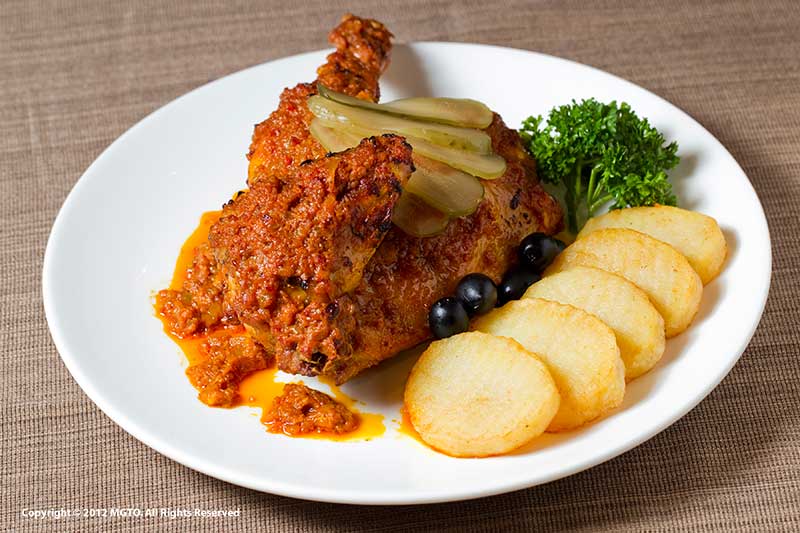
“Mateus Rose was the first grape wine that many Hong Kongers would have been introduced to,” explains Hong Kong restaurateur Lau Kin Wai.
On visits in the 1970s to then Portuguese-administered Macao (a journey which would have taken three hours on the slow ferry), they could drink a bottle of this slightly sweet, slightly fizzy rose in a dai pai dong (a café selling local Cantonese food) and bring a bottle home, too.
They would probably have had a flutter in a dusty old casino.
By the early 1990s, a lively Portuguese restaurant scene was emerging, and Macao became an inexpensive and slightly exotic culinary destination.
Hong Kongers would take the (one hour fast) ferry over for Sunday lunch, quite possibly to Fernando’s on Coloane Island.
Or they might make the trek simply to order a plate of the grilled African Chicken with chilli and coconut.
For many, Macao was African Chicken.
Except that African Chicken was not Portuguese, nor even African, but Macanese.
Lurking under the radar, invisible then to the general population and tourists except for at the Macanese café Riquexo (opened in 1975), was the indigenous cooking of Macau, created by the indigenous people of Macau.
Asian Influences in Macanese food
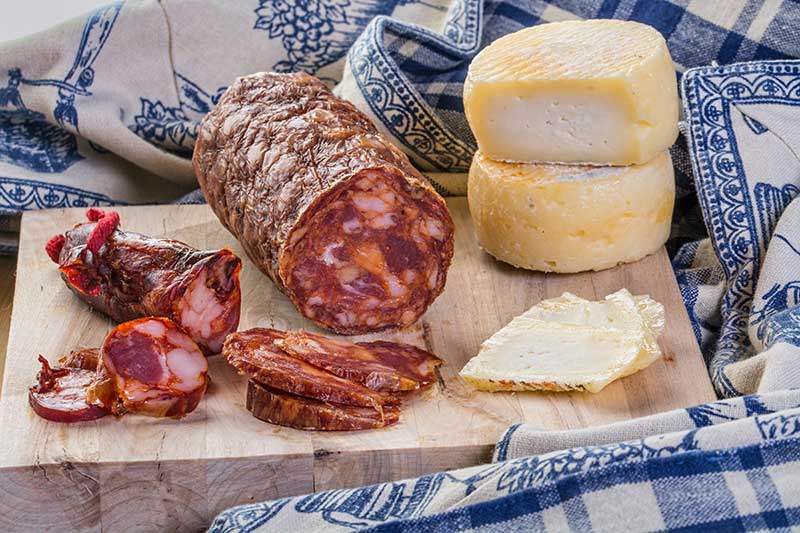
Simply put, Macanese food has its roots in Portuguese cuisine, but is distinguished by its Asian accents.
While the Portuguese have influenced cuisines across Asia, nowhere else has a truly hybrid cuisine emerged.
When the Portuguese docked in Macau in 1550, the enclave was uninhabited, so there was no culinary culture.
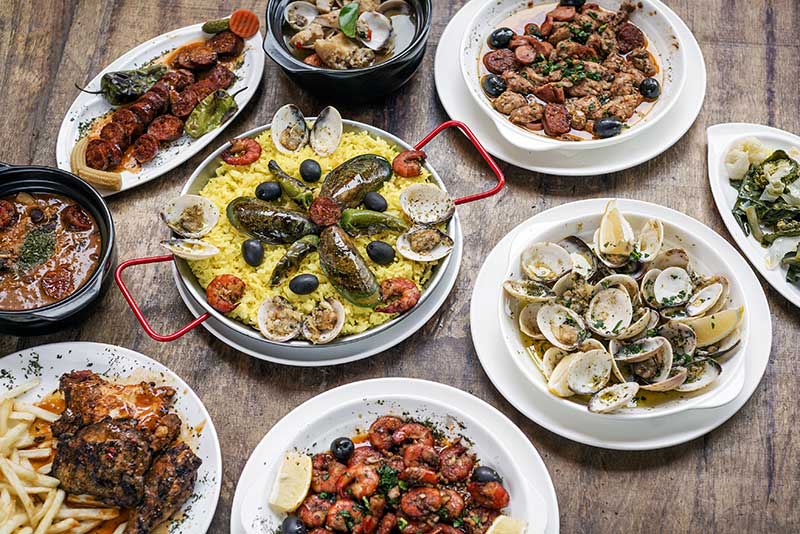
The Portuguese did not arrive alone, however, rather bringing with them wives and servants from other parts of Asia where they traded, including Goa and Malacca.
Macanese cuisine arose from domestic kitchens where substitutions would be made because of lack of availability, such as coconut instead of dairy milk.
Dishes might be deemed more tasty with the addition of shrimp paste and tamarind.
Ingredients which had hitherto never met sat side by side, such as bay leaf and cinnamon.
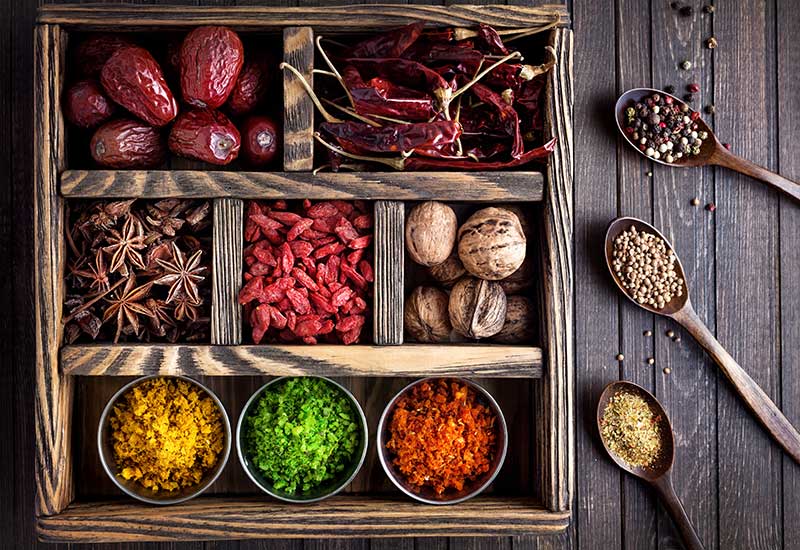
Emerging Macanese Gastronomy
Macanese cooking thus takes an important seat in the history of gastronomy and, together with Portuguese food and wine, has become part of the tourism package in Macao. But how important a part?
“I only see it going from strength to strength,” says Luis Lobo, an assistant VP with Galaxy Entertainment Group, who is himself Macanese.
“These days there is a flourish of new small authentic restaurants with owners coming from Portugal or ex-Portuguese colonies. These are welcome entries because authenticity in the age of foodies is a must-have for a tourist destination.”
He notes the increasing number of visitors to Macau looking not for a casino, but a cultural experience.
Macanese vs Michelin
In the broader context of a city becoming increasingly international in its culinary offerings, and with an impressive number of Michelin stars, government initiatives require that new five-star hotels feature Macanese and Portuguese dishes, and Portuguese wine.
Thus snapshots of the Macanese and Portuguese canons, dishes like African Chicken and pasteis bacalhau, are quite widely available.
Wine director at Wynn Palace, Paco Galdeano, reports that 15 percent of wines listed are Portuguese – though he notes strong local demand.
“It’s wonderful that the government is doing their part to make sure we (Macao) don’t lose the edge over other destinations and protect its Portuguese culture, cuisine and heritage,” says Rutger Verschuren, general manager of Grand Lapa hotel.
Perry Yuen, director of F&B at City of Dreams, concurs that such initiatives are good, “but we need more quality people to lead the game,” he concludes.
Hijacking Macanese Cuisine?
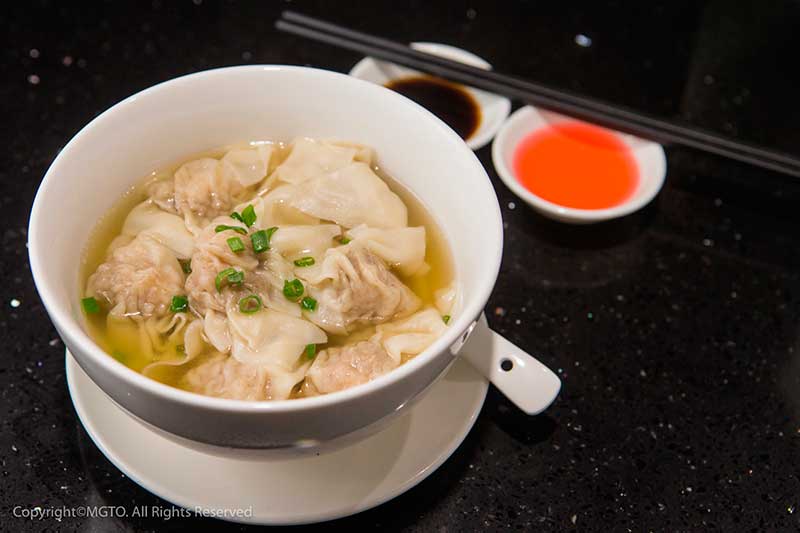
Indeed, in reality, such a programme is difficult to enforce.
Founder of Riquexo café, Sonia Palmer, who also owns Portuguese restaurant Miramar, comments that it often amounts to little more than the occasional hotel promotion.
Hugo Bandeira, F&B manager and lecturer at Macau’s tourism school, IFT, adds that it is hard to enforce, and he further raises the question as to what constitutes Macanese cooking?
Independent restaurants which claim to be Macanese might be Portuguese and a restaurant that claims to be Portuguese might be Cantonese.
Macanese cuisine may be perceived to have a now greater presence in Macao but not without a price.
Macanese are fearful of losing their authentic cuisine, hijacked and de-authenticated not only by five-star hotels but by local Cantonese restaurants, many of which now have a Macanese page.
The recipes, however, show significant Chinese interpretation.
There are no prominent Macanese chefs in Macau, which is part of the reason for this culinary “confusion” – as Bandeira puts it – but he also highlights the sometimes old-fashioned modes of preparation and ingredients and the non-commercial nature of some of the highly time-consuming recipes.
For hotel consultant Luis Heredia, an industry veteran, the solution is quite simple: modernity.
“We need chefs in Macao to say: What can we do with Macanese cuisine? And then run with it”.
Types of Macanese dishes
The Macanese egg tart is a well-known Macanese treat. While in Macao, head to Lord Stow’s Bakery for the original but you will find interpretations of the Macanese and Portuguese egg tart in many places in Macao.
Minchi
The ultimate dish within the Macanese community. Typically a combination of ground beef and pork, cooked with onions and garlic, seasoned with soy sauces and Worcestershire shire, and served with fried potato cubes, steamed rice, and a fried egg.
African Chicken
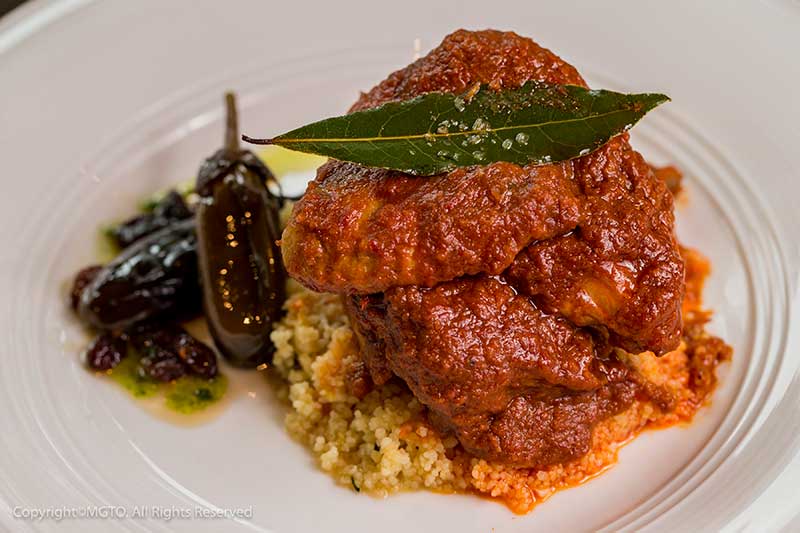
An iconic dish for visitors to Macau, African Chicken is a grilled chicken marinated with garlic and chilli, grilled with coconut milk and usually served in a spicy tomato sauce.
Porco Balichao Tamarinho
Clearly of Malay origin; cubed pork in a sour-sweet (tamarind-jaggery) sauce accented with Macanese fermented fish sauce (balichao).
Serradura
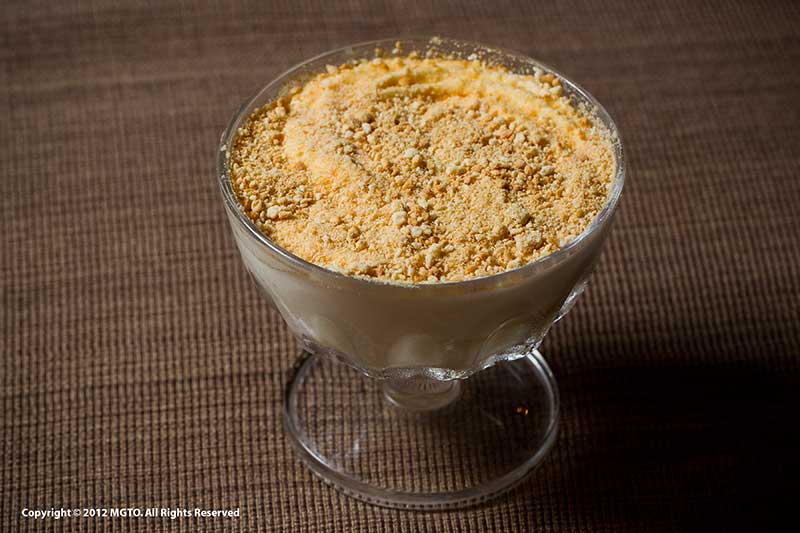
Of obvious Portuguese derivation: condensed milk-based dessert layered with ground biscuits.
Tacho
Classic winter stew incorporating many Cantonese meat cuts from the market, also Chinese vegetables. One of the most Cantonese-inspired dishes from the Macanese canton.
Arroz Gordo
Literally “Fat Rice”. A mix of all kinds of meat cooked together, closely related to the Portuguese cozido and served with rice.
Chamussas
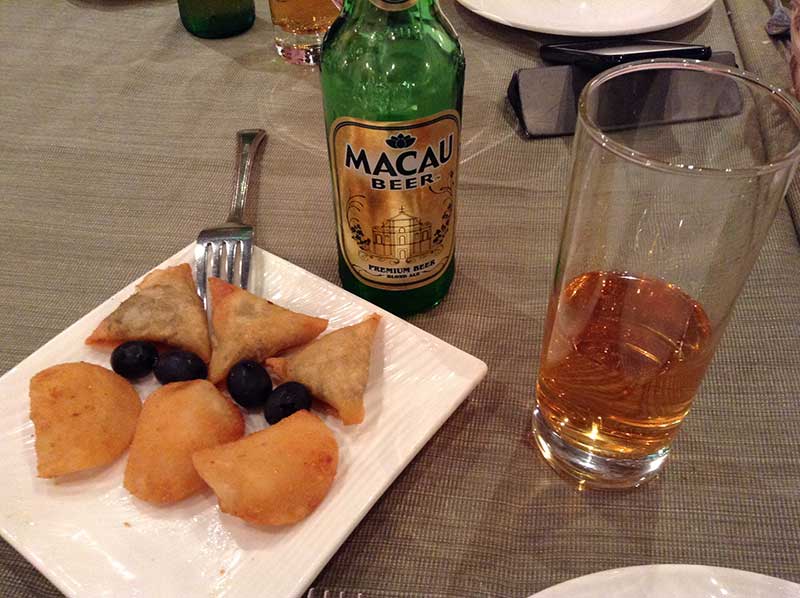
Of Goan in origin – vegetarian or spicy ground beef stuffing – inside wheat flour wraps, deep-fried. Chamussas are possible a relation of the Samosa.
Macau Prawns
King prawns, intact, pan-fried with garlic, chili and spring onions and garnished with coriander.
Capela
Finely chopped pork and cheese-based meatloaf, probably related to a similar loaf from the Portuguese university city of Coimbra.
Restaurants in Macao serving Macanese food
Riquexo
Songbo Village, 69 Avenida de Sidonio Pais
Riquexo has been operating since 1978, the original Macanese restaurant, canteen style, serving Macanese classics from minchi and mild chicken curry to steamed turnip pudding and beef stew.
APOMAC
Edificio China Plaza, 49 Avenida de Sidonio Pais
A club for retired Macanese civil servants, its restaurant is open to the public. Chicken rice, suckling pig, okra and shrimp curry.
Carlos
432 Rua Cidade de Braga, NAPE
Carlos is particularly noted for porco balichao tamarinho, and minchi.
Dom Galo
32 Avenida Sir Anders Ljungstedt, NAPE
Dom Galo is a Portuguese restaurant with some Macanese dishes, such as bitter gourd with shrimp, minchi and serradura.
Henri’s Galley
4 Avenida da Republica, Sai Van
Since 1978. African chicken is the best seller; also Macanese king prawns and curried crab.
A Lorcha
289 Rua do Almirante Sergio
A Lorcha is a Portuguese restaurant serving a few Macanese dishes such as chamussas cooked by a local Macanese.
Café Encore
Wynn Macau, Rua Cidade da Sintra, NAPE
Cantonese, Portuguese and Macanese cuisines presented alongside each other: try fried Macanese prawns.
Dragon
40 Rua de Felicidade
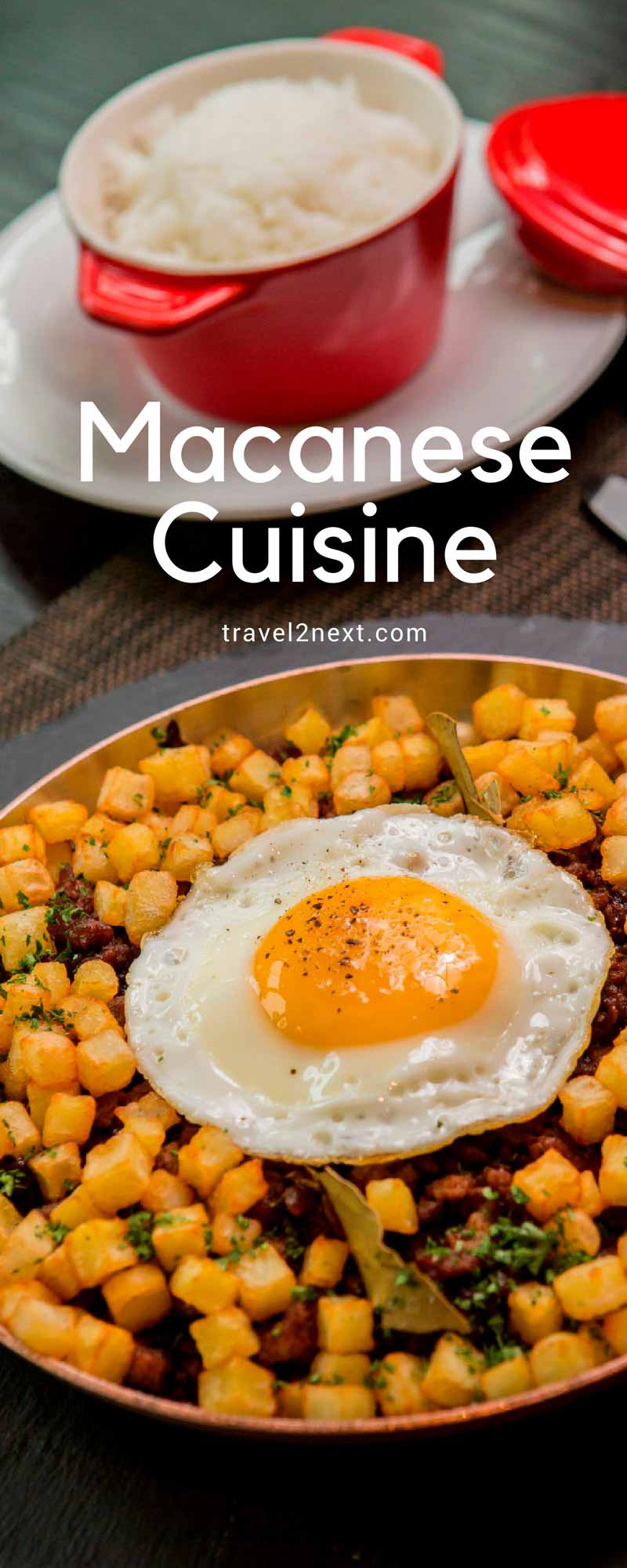
Cantonese take on Portuguese and Macanese food, including crab curry and minchi.
For more things to see and do in Macau read these posts:
Plan Your Trip

Rent A Car – Find the best car rental rates at Discover Cars. They compare car hire companies to provide you with the best deal right now.

Find A Hotel – If you’re curious about this article and are looking for somewhere to stay, take a look at these amazing hotels.




